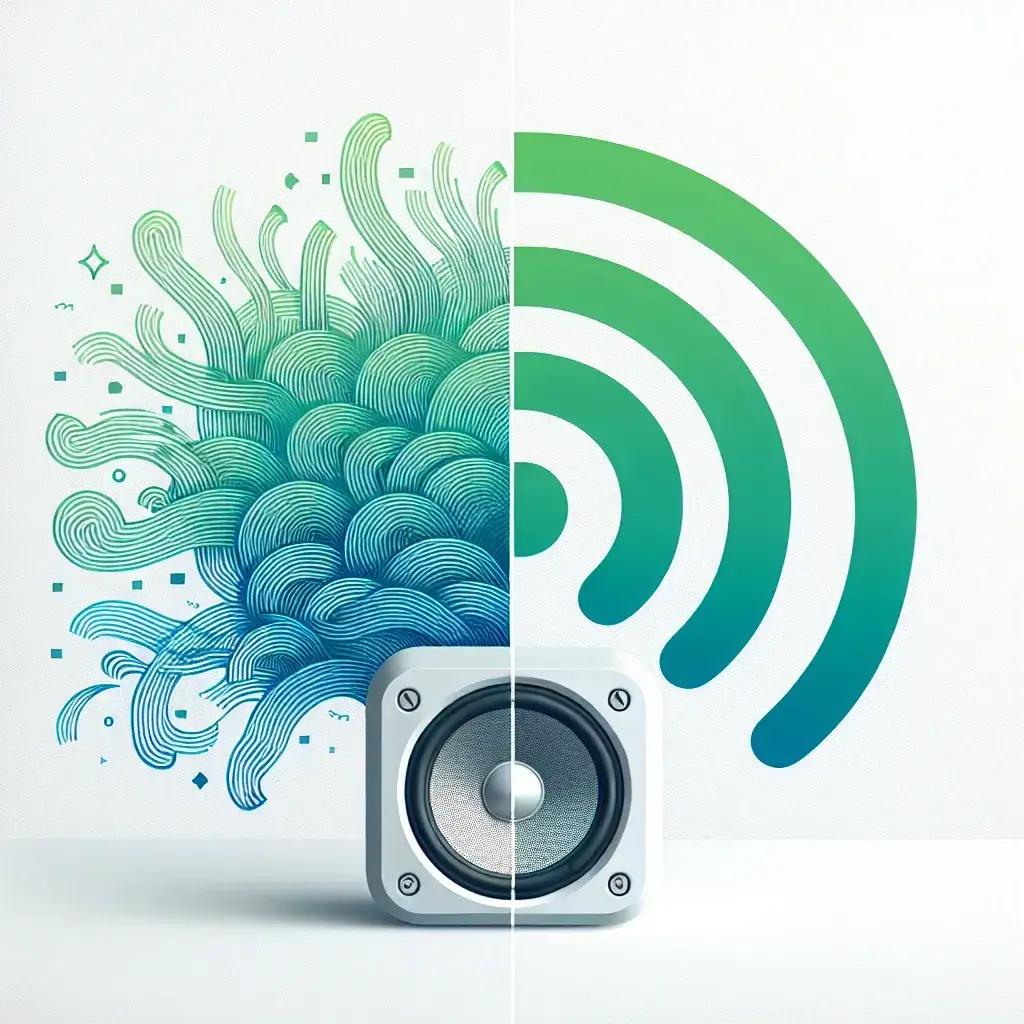Audio streaming has revolutionized how we listen to music, podcasts, and other media. Two prominent technologies enabling wireless audio are Bluetooth and Wi-Fi. While both are used for similar purposes, they differ significantly in technology, usage, and functionality. This article delves into the notable distinctions between Bluetooth audio and Wi-Fi audio streaming.
Table of Comparison
| Factor | Bluetooth Audio | Wi-Fi Audio |
|---|---|---|
| Range | 10-30 feet | Over 100 feet |
| Audio Quality | Compressed – Moderate | Uncompressed – High |
| Latency | High | Low |
| Power Consumption | Low | High |
| Device Compatibility | High | Moderate |
| Interference | Common | Less Common |
| Setup | Simple | Complex |
| Data Transfer Rate | Low | High |
| Use Case | Personal, Portable | Home, Professional |
Range
One of the fundamental differences is the operational range. Bluetooth audio typically works within a range of 10 to 30 feet. Wi-Fi audio streaming, however, can operate over distances greater than 100 feet. This makes Wi-Fi far more suitable for home audio systems where the source and the speakers may be located in different rooms.
Audio Quality
Bluetooth audio often involves compression to ensure smooth transmission, which can lead to a moderate audio quality. In contrast, Wi-Fi audio has the capability to stream uncompressed data, offering higher quality sound. This difference is usually noticeable when listening to high-fidelity audio content.
Latency
The latency, or delay, is another critical differentiator. Bluetooth audio tends to have a higher latency, which could be problematic for activities like watching movies. Wi-Fi audio streaming, however, generally experiences lower latency, making it more suitable for real-time applications.
Power Consumption
Bluetooth devices tend to consume less power compared to Wi-Fi devices. This makes Bluetooth ideal for portable designs, such as wireless headphones or speakers that rely on battery power. Conversely, Wi-Fi audio systems usually require more power, aligning them more with home or office environments where power supply is less of a concern.
Device Compatibility
Bluetooth enjoys widespread compatibility across various devices, including smartphones, tablets, and laptops. Wi-Fi audio devices may not share this universality and often require specific hardware or applications to function correctly.
Interference
Bluetooth operates on the crowded 2.4 GHz band, which is shared with many other devices including Wi-Fi routers, microwaves, and even cordless phones. This can lead to interference. Wi-Fi, particularly on the 5 GHz band, experiences less interference and provides a more stable connection.
Setup
The setup for Bluetooth audio is generally straightforward, often requiring just a simple pairing process. Wi-Fi audio streaming typically involves a more complex setup, usually needing a network connection and sometimes additional software or applications.
Data Transfer Rate
The data transfer rate for Bluetooth is relatively low compared to Wi-Fi. This is a key reason why Bluetooth audio is usually compressed. Wi-Fi offers high data transfer rates that can handle uncompressed audio streams, giving it an edge in audio quality.
Use Case
Bluetooth audio is best suited for personal, portable use such as wireless earbuds or on-the-go speakers. Wi-Fi audio, on the other hand, excels in more permanent setups like home audio systems and professional environments where high-quality sound is essential.
Conclusion
Understanding the differences between Bluetooth and Wi-Fi audio streaming can help you make an informed choice based on your needs. Bluetooth’s portability and ease of use make it ideal for personal use, while Wi-Fi’s high range and superior audio quality are better suited for home and professional settings.
